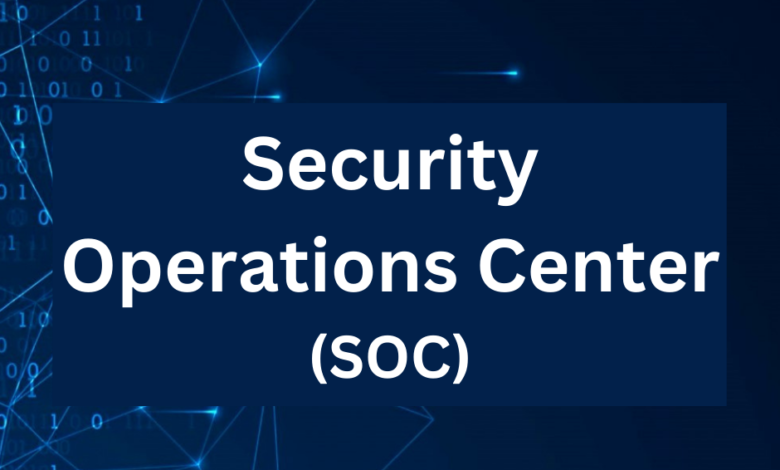Demystifying SOC: A Comprehensive Overview

In the rapidly evolving world of information technology and cybersecurity, the concept of a Security Operations Center (SOC) has become increasingly significant. This article aims to provide a detailed understanding of what a SOC is, its key components, functions, and the growing trend towards managed SOC services. This knowledge is crucial for organizations looking to enhance their cybersecurity posture in a landscape marked by sophisticated threats.
Understanding the Security Operations Center (SOC)
A Security Operations Center (SOC) is a centralized unit that deals with security issues on an organizational and technical level. It comprises a team of security analysts and engineers as well as solutions and processes dedicated to detecting, analyzing, responding to, reporting on, and preventing cybersecurity incidents. The primary mission of a SOC is to ensure the ongoing monitoring and analysis of an organization’s security posture and to defend against security breaches and cyber threats.
Key Components of a SOC
A SOC is not just a physical space or a team of experts; it’s an integration of various components:
- People: The core of a SOC is its team, which includes security analysts, engineers, and managers. They are responsible for monitoring, analyzing, and responding to security incidents.
- Processes: These are the guidelines that govern how the SOC operates. Processes include incident response plans, communication protocols, and standard operating procedures.
- Technology: This includes the tools and technologies used for security monitoring, threat detection, incident response, and reporting. Common technologies used in a SOC include Security Information and Event Management (SIEM) systems, firewalls, intrusion detection/prevention systems (IDS/IPS), and other advanced cybersecurity tools.
Functions of a SOC
The functions of a SOC can be categorized into several key areas:
- Continuous Monitoring and Analysis: SOCs are responsible for the continuous monitoring of an organization’s networks and systems. This monitoring helps in the early detection of potential security incidents.
- Incident Response and Management: In case of a security breach, the SOC team takes immediate action to contain the threat, eradicate it, and recover any affected systems.
- Threat Intelligence: SOCs gather and analyze information about emerging threats and vulnerabilities to keep the organization ahead of potential security issues.
- Compliance Management: Many SOCs also play a role in ensuring that the organization complies with relevant industry and government cybersecurity regulations.
- Reporting and Communication: SOCs regularly report on security status, incidents, and ongoing activities to other parts of the organization.
The Growing Importance of Managed SOC
Managed SOC is a service model where an organization outsources its SOC functions to a third-party service provider. This model has gained popularity due to the increasing complexity of cybersecurity threats and the challenges associated with building and maintaining an in-house SOC. A managed SOC provides several advantages:
- Access to Expertise: Managed SOC services offer access to a broader range of cybersecurity expertise, which might be difficult or costly to develop in-house.
- Cost Efficiency: Outsourcing SOC functions can be more cost-effective than building an in-house SOC, especially for small and medium-sized businesses.
- Round-the-Clock Monitoring: Managed SOC providers typically offer 24/7 monitoring, which is essential for timely threat detection and response.
- Scalability: Managed SOC services can be scaled according to the organization’s needs, providing flexibility and adaptability.
Challenges in SOC Implementation
Setting up and operating a SOC presents several challenges:
- Resource Intensive: Establishing a SOC requires significant investment in terms of technology, personnel, and training.
- Staying Current: The fast-evolving nature of cyber threats means that SOCs need to continually update their skills and technologies.
- Complexity of Integration: Integrating various security tools and ensuring they work harmoniously can be complex and requires skilled personnel.
- Alert Fatigue: SOCs deal with a vast amount of data and alerts, making it challenging to distinguish between false positives and actual threats.
Future Trends in SOC Development
The future of SOC development is shaped by technological advancements and changing cybersecurity landscapes:
- Artificial Intelligence and Machine Learning: The integration of AI and ML in SOCs can significantly enhance threat detection and response capabilities.
- Cloud-Based SOCs: The shift towards cloud computing is leading to the development of cloud-based SOC models, offering more flexibility and scalability.
- Focus on Threat Hunting: Proactive threat hunting is becoming an essential function of advanced SOCs, moving beyond reactive threat management to actively seeking out sophisticated threats.
- Increased Emphasis on Training and Development: As the threat landscape evolves, continuous training and skill development become crucial for SOC teams.
Conclusion
A Security Operations Center (SOC) is an essential component of modern cybersecurity strategies. It combines skilled personnel, efficient processes, and advanced technology to protect organizations from a myriad of cyber threats. While establishing and maintaining an in-house SOC is resource-intensive, the rise of managed SOC services offers a viable alternative, especially for organizations lacking the necessary resources. As cyber threats continue to evolve in complexity and sophistication, the role of SOCs – whether in-house or managed – will remain integral in safeguarding organizations’ digital assets and maintaining their overall security posture.



